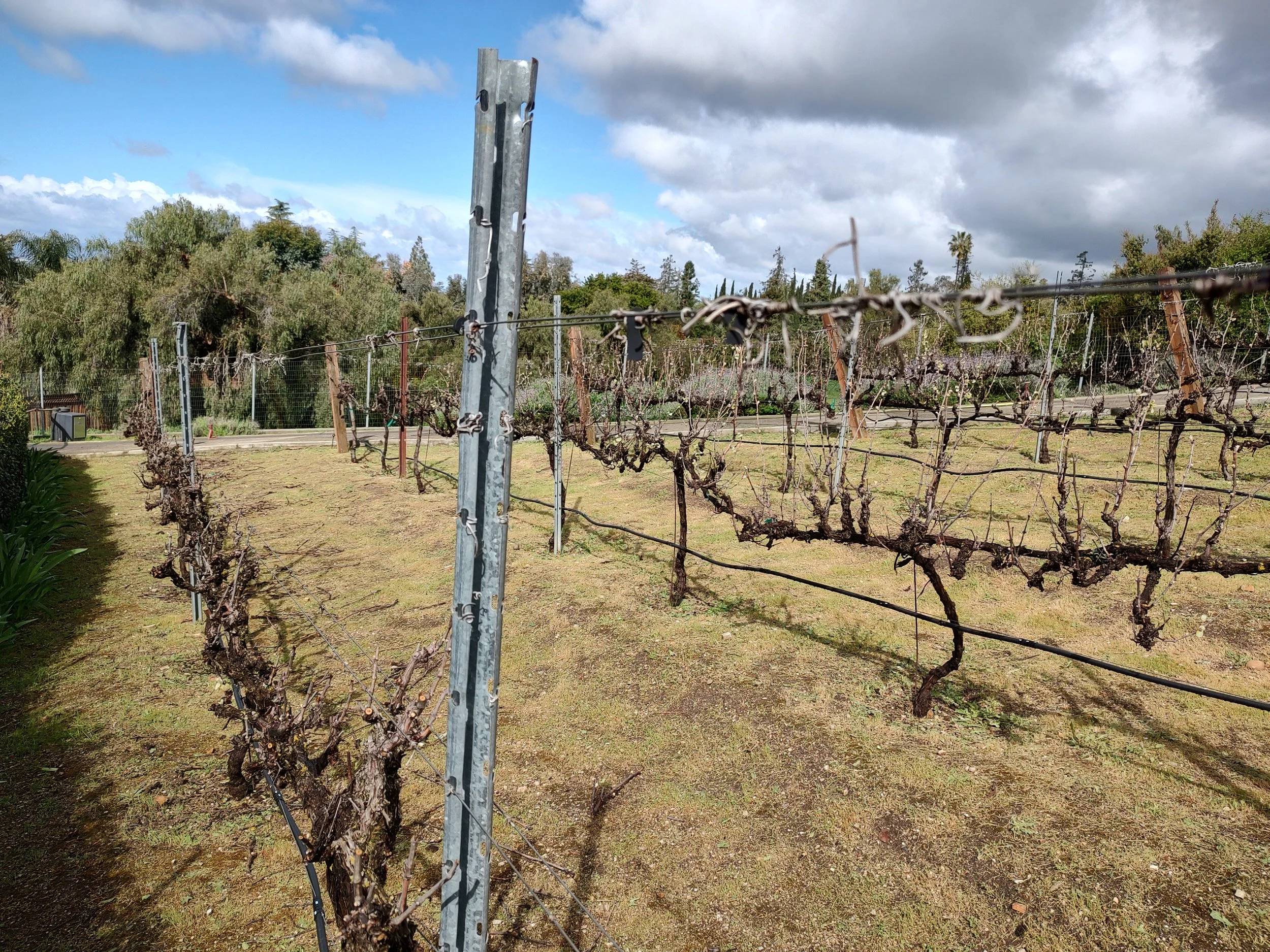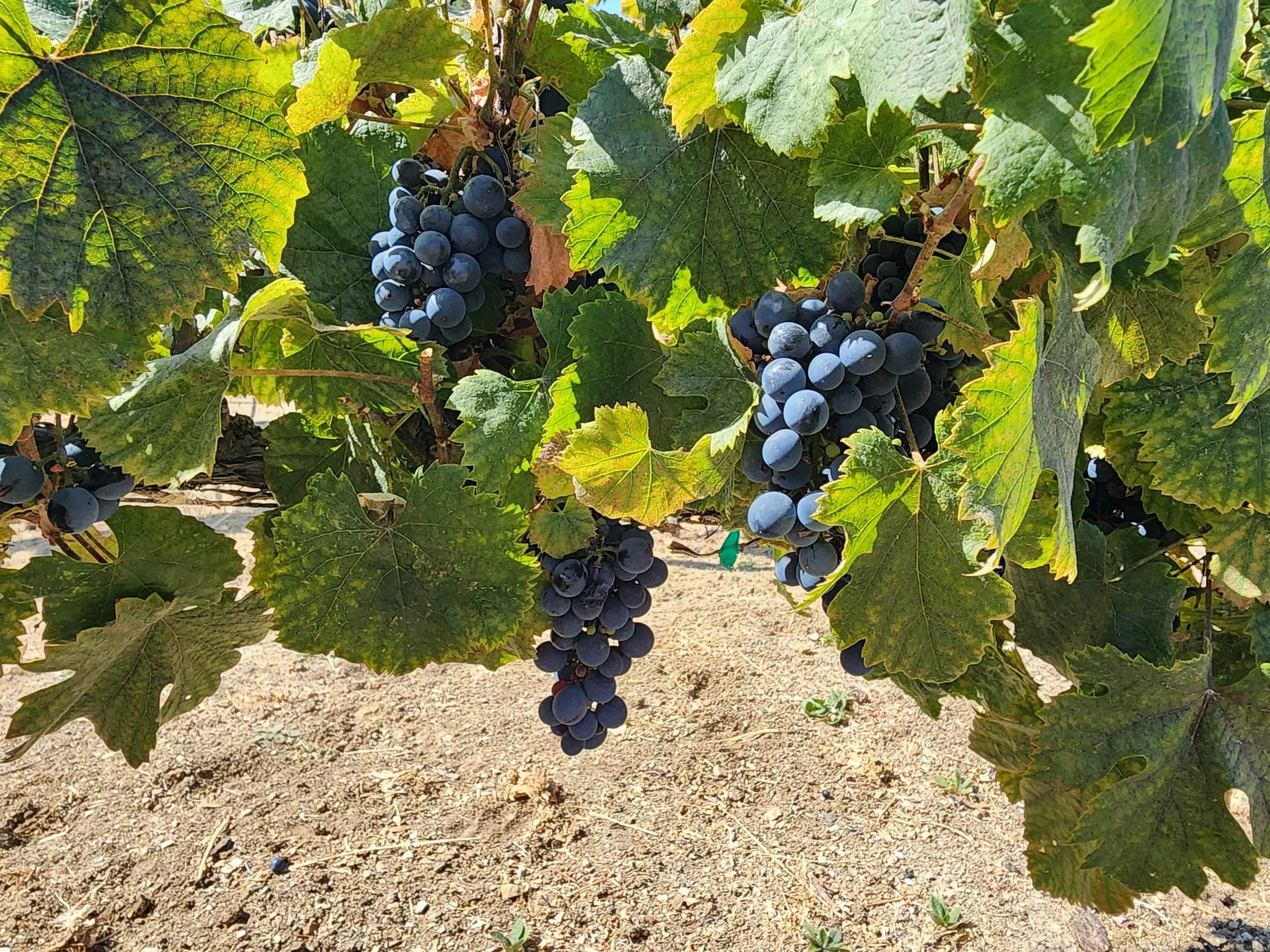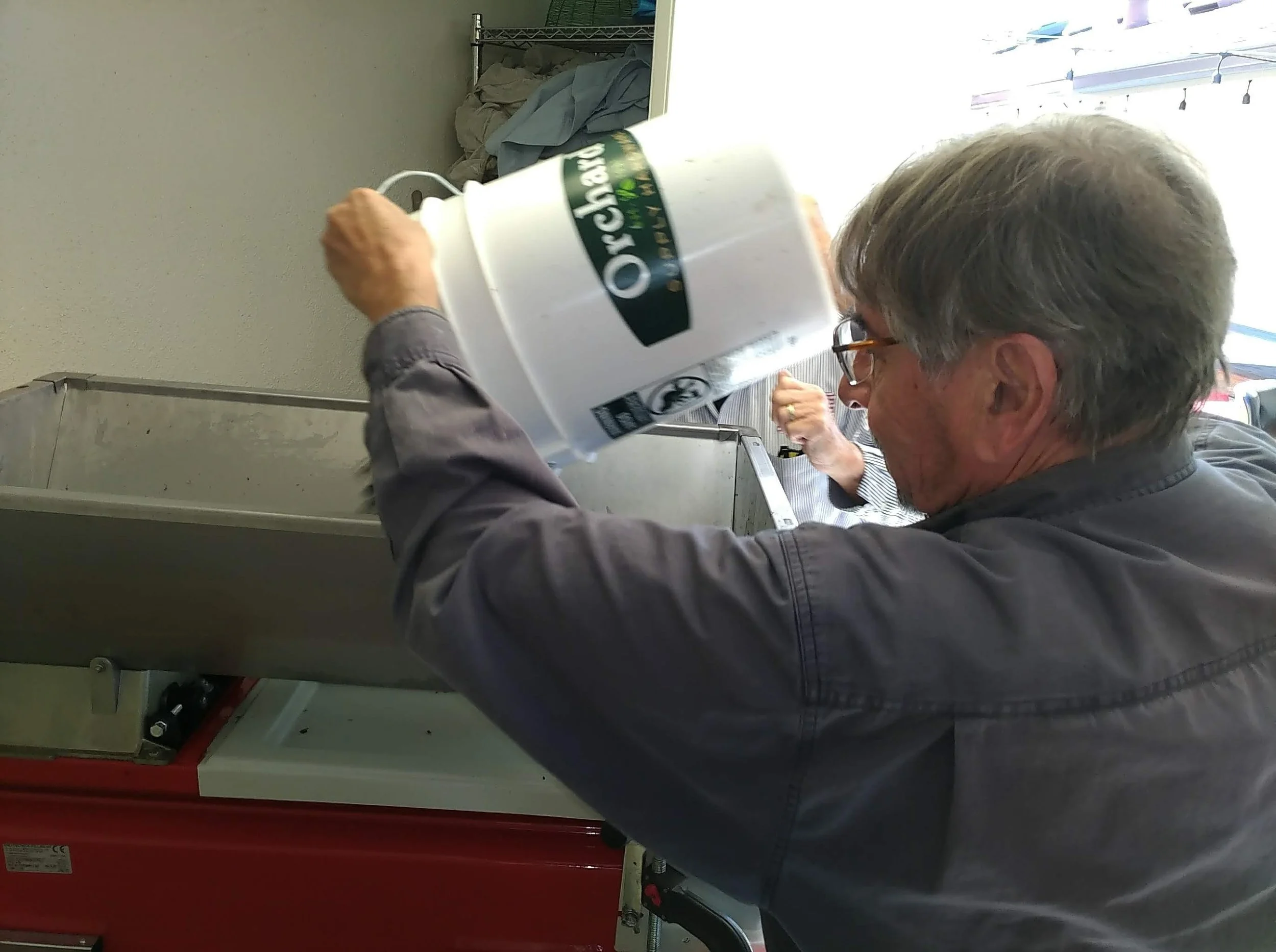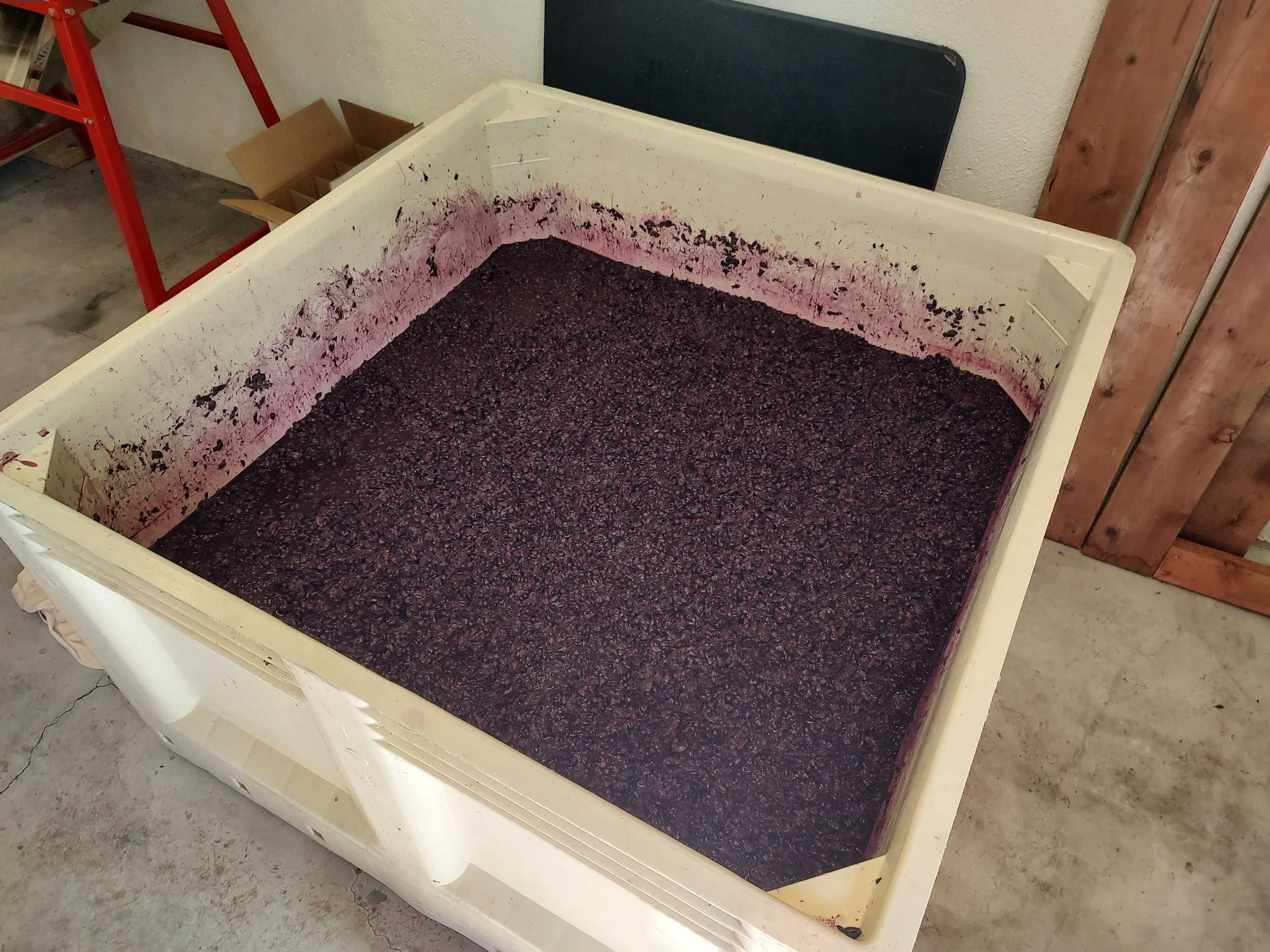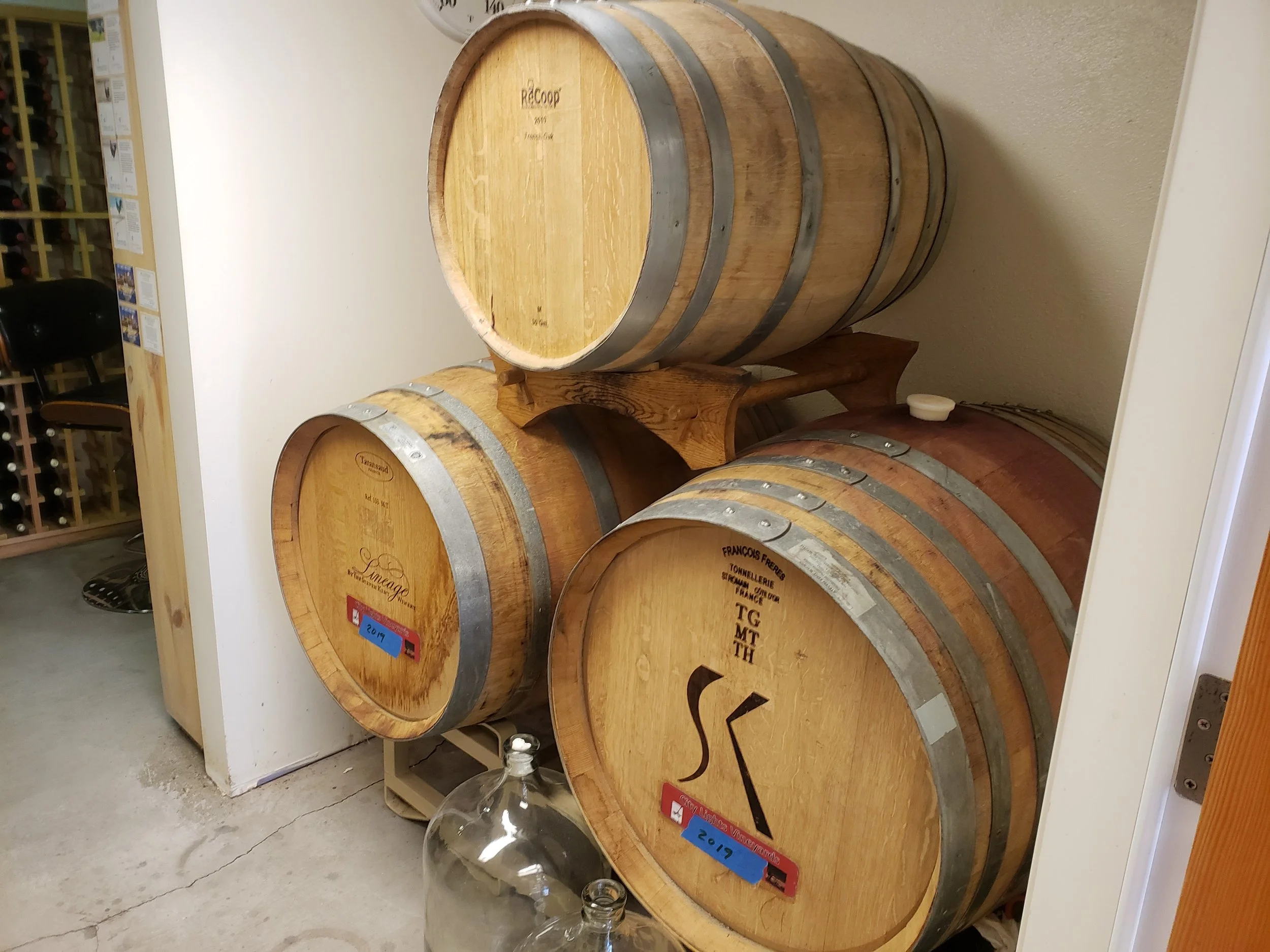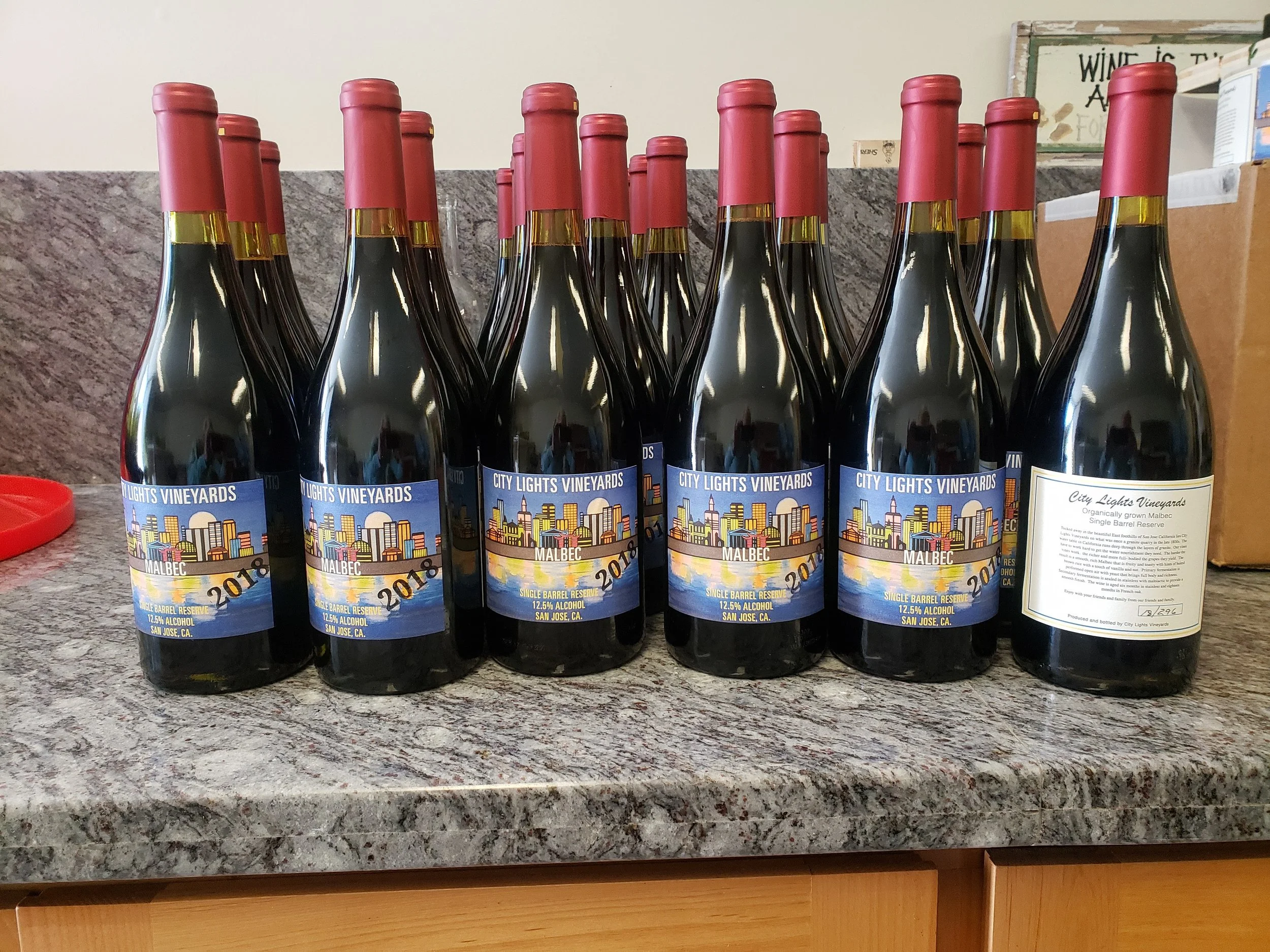The Art of Wine Making
Growing grapes and making fine wine is a combination of attentive farming, chemistry, art and just a bit of soul. We wanted to make wine the way we like it: rich, smooth, with a delightful after taste that goes well with any food. We started this with an inherently bitter grape, the Malbec. Our journey to achieving this goal with this grape is what follows.
The Grapes
City Lights Vineyards is on property that was a granite quarry in the 1890s. Our soil is literally all granite. Very few grapes can survive in this type of soil — Malbec is one of them. It is a tough grape that works hard to get water with deep roots. This is where the granite soil is both a blessing and curse for us. The water table in California moves from North to South through the granite layers but it is deep. Our vines probably have roots as long as 70 ft. to get to the water. There is an old saying, “the harder the vines work the better the grapes.” We believe we are a case in point on the saying.
We are a dry crop. The only water the vines get is from winter rains and working hard to get down to the water moving through the granite layers. Our grapes are organically grown. We use no chemicals on or even near the vineyards. We prune for quality not quantity. Depending on how we prune, our yearly yield can vary as much as 1000 lbs. Pruning for quality not quantity can be tasted in the grapes. The fewer grapes get more growth energy, water and sunlight, it results in a sweeter, richer tasting grape. The vines are topped and trimmed three times a growing season. This makes sure the growth energy of the vines is going to the grapes not stocks and sunlight is getting to the bunches. Our vineyards are hillside and face Southwest resulting in sun exposure all day.
Harvest & Crush Day is a big party with friends and family. Mark and Linda are involved in the exotic & classic car culture in Northern California. They host a “Cars and Crush” event with fellow car builders and the Pantera Club of Northern California. Attendees fill the pad up with exciting cars and chip in to pick and crush grapes. We typically harvest when the brix (measure of sugar in the grapes) is about 26. 24 to 28 is ideal. The groups run a bucket brigade to the crusher while Mark works the Rose that is made from free running juice and processed separately from the pure Malbec. After the work is done, we all enjoy a great BBQ and lots of rich Malbec.
Processing
We crush traditionally with “Girtty” the crusher being careful to capture the weight of the grapes. All the chemicals used in processing are determined by the weight of the crushed grapes or juice. While we grow grapes organically, we cannot call our wine “Organic”. We use a variety of chemicals for processing and clarification. We kill the natural yeast on the grapes so we can fully control the primary fermentation. Primary fermentation is done in an open Tote using hydrated Ryne yeast. Ryne yeast is a rich yeast that is one of elements that we use to smooth out the bitterness of the grape. Primary fermentation runs for about 10 days, and we take the brix down to -2. This is the process of transitioning the sugar in the must (crushed grapes) to alcohol. If we started at 26 brix that difference is 28 points. Divide by 2 and that is the resultant alcohol content, or 14% in this example.
Our pressing technique is a key to how our wine ultimately is charactered. We press very lightly to keep tannin and acid levels low, again cutting the bitterness. After pressing and filtering we move on to secondary fermentation in stainless steel.
Secondary fermentation adds richness and depth to the wine and as with every other step in our process cuts bitterness. We use malolactic for secondary fermentation of the juice in stainless steel tanks. Malolactic is what makes rich and full-bodied Chardonnays. This extra step is expensive and time consuming and many Chardonnay makers have gone away from it to cut costs. This is why so many Chardonnays taste so mineral-heavy today. Secondary fermentation runs for about two weeks. We measure SI02 levels to determine when to stop the process.
Aging
Aging is what brings the wine alive. Aging begins in the stainless for about six months. The wine is racked (pumped out into a fresh tank leaving behind dead yeast and particulate in the bottom of the tank) two times during that period. We also add rouge to grab any remaining particulate and pull it to the bottom of the tank.
We move into French oak, medium charred barrels after the stainless aging. The wine is in barrels 18 to 24 months. We bottle from a single barrel; we never mix barrels. Each barrel has character, and it can be tasted in the wine. We also use 60- and 30-gallon barrels. The 30-gallon barrels impart more oak flavor on the wine because the oak surface relationship to the amount of wine in the barrel is greater. The variation is honestly due to where Mark is in the bottling process of the previous vintage wine. If he is running late the wine does more time in the barrels. Once bottled we age in the bottle for a year before passing our beloved product on.
All these growing and processing steps represent the art of wine making and how City Lights Vineyards turns Malbec grapes into a rich, smooth wine with soul. We hope you enjoy it as much as we and our friends do!
